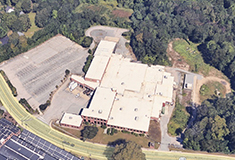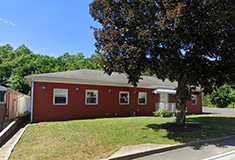Three Pawtucket historic preservation projects honored - by Donald Grebien

Donald Grebien
Newport is recognized for its turn of the century mansions and sandy beaches. Providence is known for its culinary delights. Pawtucket has its historic commercial and industrial buildings scattered throughout the city filled with small businesses, artists and residents.
The city has actively focused on repurposing its historic buildings for live/work space and for small businesses with great success. Local developers have embraced and preserved Pawtucket’s rich history and transformed these old properties into hubs of economic activity once again.
As a key component of the city’s economic development and preservation strategy, Pawtucket has an active Historic District Commission to protect its architectural treasures and show the importance we place on preserving our historical assets. Developers can tap into national and local historic districts to bring in tax credits for projects that bring life to old buildings. A newly created National Park will preserve Slater Mill, the birthplace of America’s Industrial Revolution.
In November, Preserve Rhode Island and the Rhode Island Historical Preservation & Heritage Commission awarded its 2020 Rhody Awards for Historic Preservation to nine awardees, recognizing three Pawtucket-based historic adaptive reuse projects.
It took $40 million and 15 years for Urban Smart Growth to transform the 650,000 s/f Hope Artiste Village, a turn-of-the-century textile plant built for the Hope Webbing Company, into a mixed-use destination. By using a combination of Federal and State Historic Tax Credits, Urban Smart Growth carried out a multiphase rehabilitation that began in 2005 on the Main St. side with the creation of art studios, professional offices, commercial spaces, restaurants and light industrial units and the restoration of the historic Breaktime Bowl and Bar. The dynamic mix of tenants attracted an exciting destination—the weekly Pawtucket Open Market —and was key to providing the momentum for bringing on 149 residential loft-style apartments in the five-story mill on the Esten St. side.
The former Church Hill Grammar School, vacant for years, was rehabilitated to provide 14 market-rate apartments in the City’s Church Hill Industrial Historic District. Constructed in 1889-90 and designed by William R. Walker & Son, the former school building is a handsome, red brick building with Queen Anne-style details and a large square bell tower. Developer Everett Amaral initiated a project to rehab the building for office tenants, and the skilled team at Caragh Development completed the project for residential use. The developer paid careful attention to detail and restoration of key historic features like the stairways to ensure that this proud school building endures as a Pawtucket landmark.
Finally, the tedious restoration of the “Miss Lorraine,” a 1941 Worcester Diner, was a 10-year labor of love for owner Jonathan Savage. He relocated an abandoned diner from Connecticut and installed it outside Lorraine Mills, a 360,000 s/f Pawtucket-based mill complex. Input from diner experts on the original diner’s configuration and where to locate finishes and fixtures guided general contractor Joe Pacheco in restoring this streamlined original beauty. Miss Lorraine is open for business, offering hot coffee and traditional diner meals.
Donald Grebien is the mayor of city of Pawtucket, R.I.







.png)
